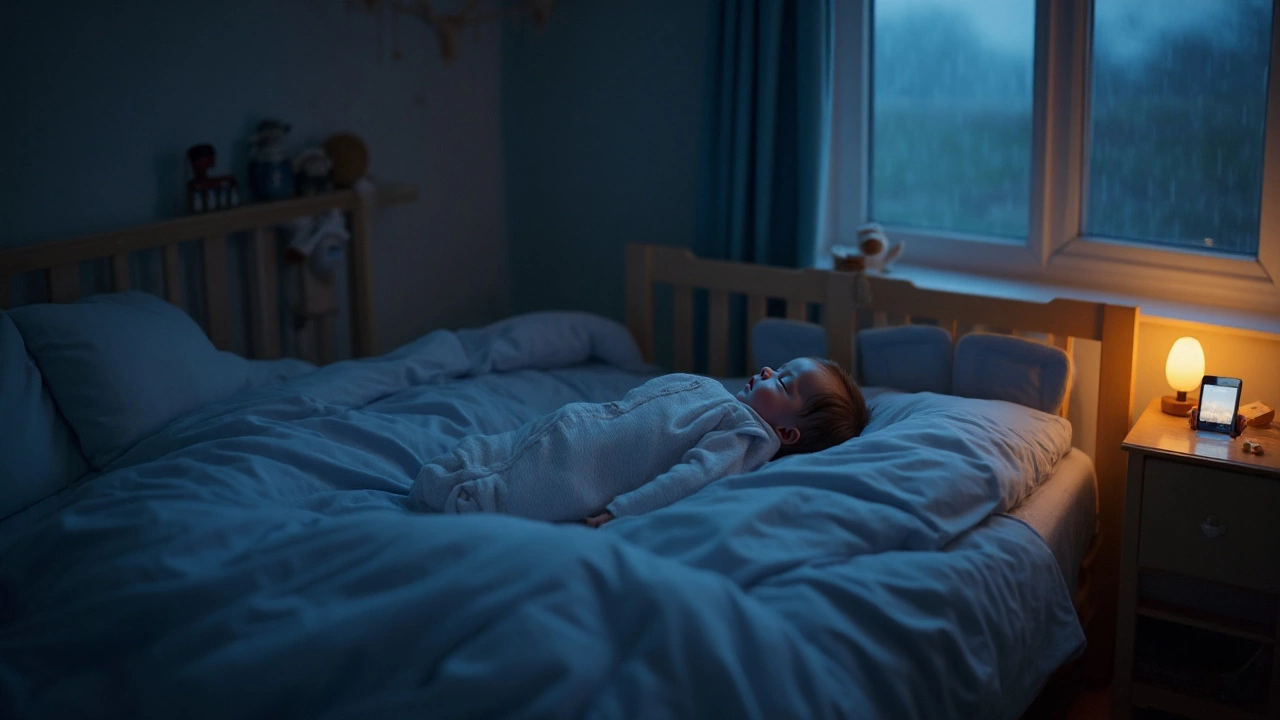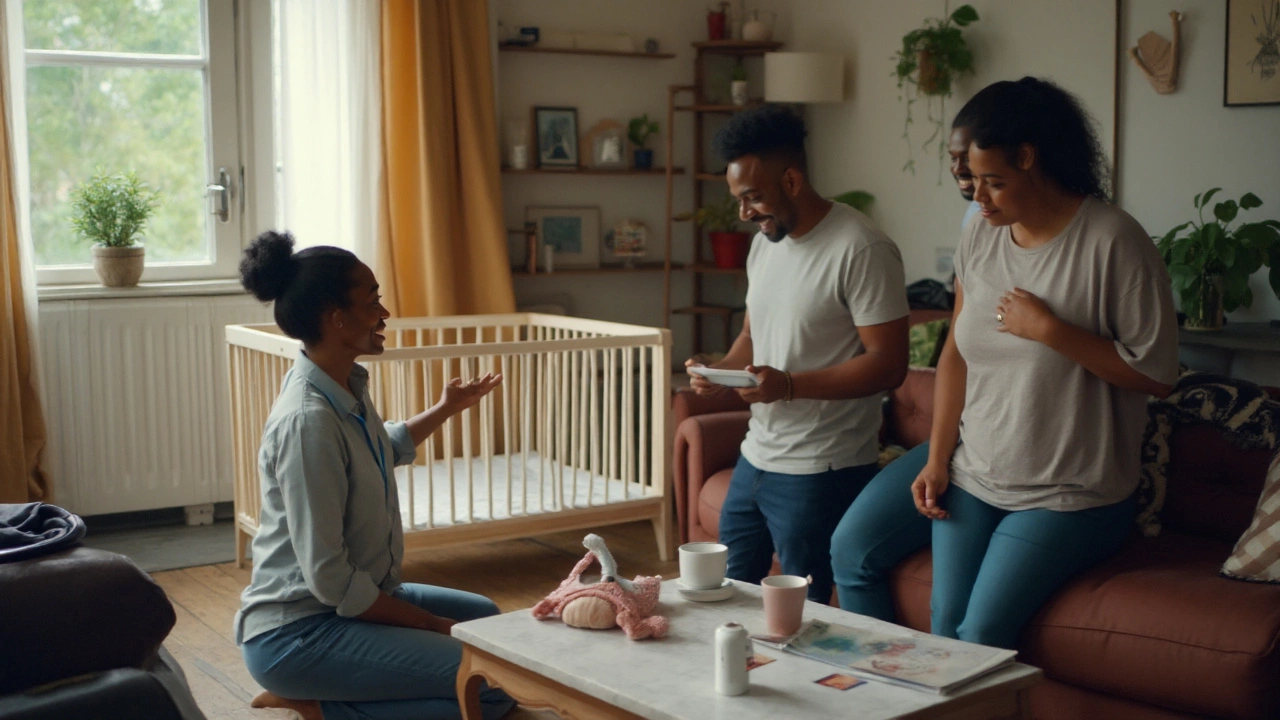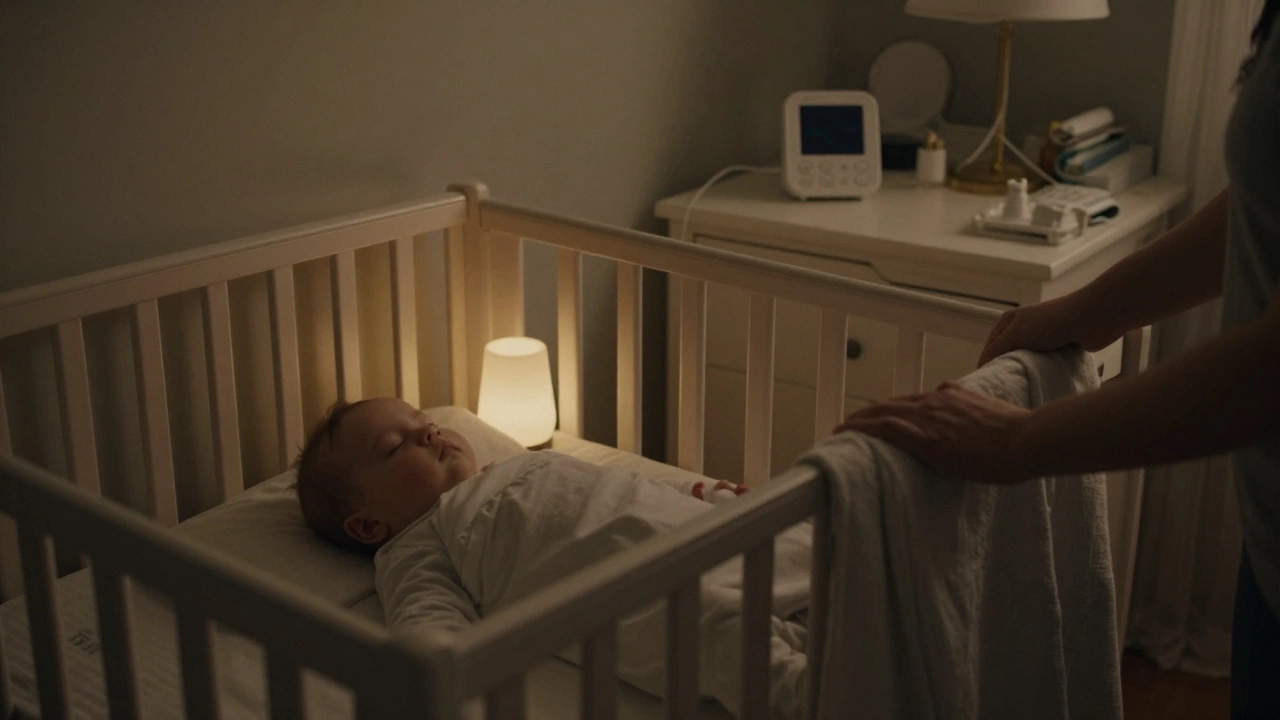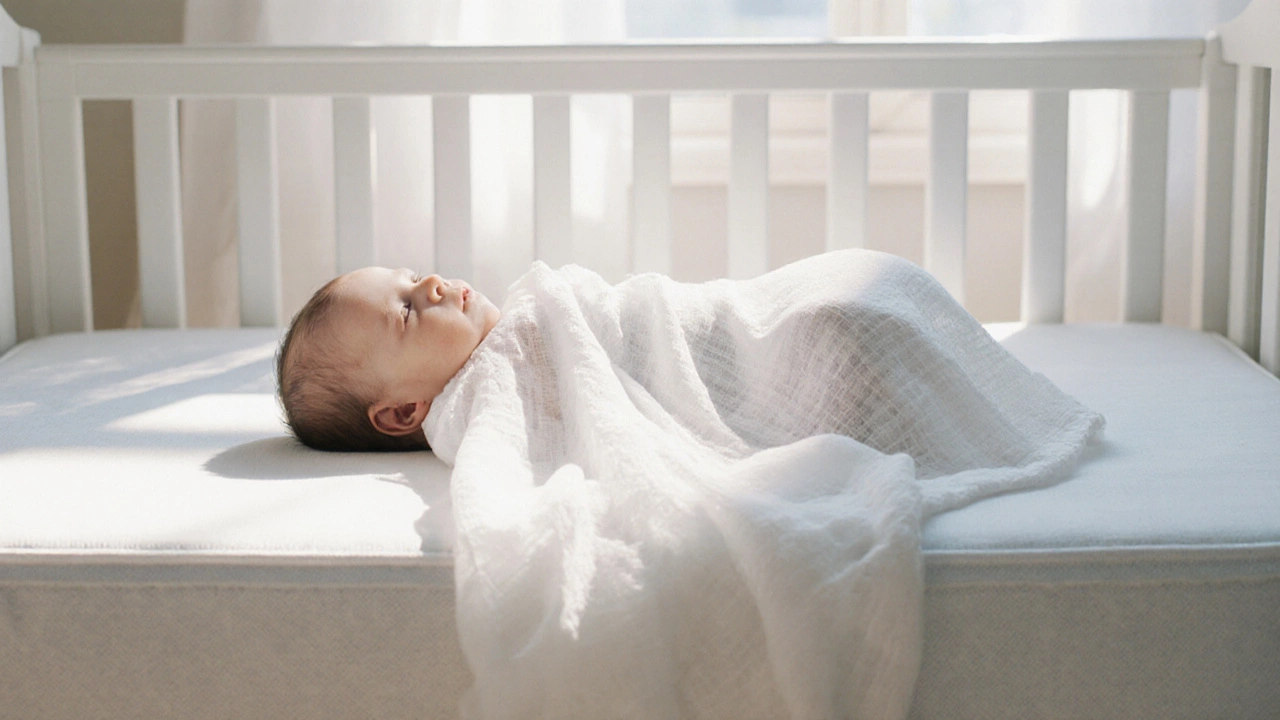Do Smart Baby Monitors Prevent SIDS? Evidence-Based Guide for Parents (2025)

I’ll cut to it: no consumer device can prevent SIDS. Some monitors track breathing or oxygen; a few even have medical-grade clearance to measure vitals. But none have been shown to reduce SIDS deaths. That’s not a bug in the tech-it’s the nature of SIDS. As a Vancouver mom who tried a wearable with my son, Finn, I learned fast: the alerts are loud, the anxiety is louder, and the science is clear about what actually lowers risk-your sleep setup, not your smartphone.
So what should you expect? A monitor can notify you if something changes (movement stops, oxygen dips, baby rolls). It cannot stop SIDS or replace safe sleep habits. The strongest protections are still simple, low-tech steps recommended by pediatric groups in Canada and the U.S.
TL;DR: The short answer and what to do instead
- Answer: smart baby monitors don’t prevent SIDS. The American Academy of Pediatrics (AAP) and the Canadian Paediatric Society (CPS) advise against using home monitors to stop SIDS.
- Why: SIDS is a complex syndrome without a single early warning sign; alerts don’t equal prevention. FDA/Health Canada clearance to measure oxygen/heart rate ≠ proof of reducing SIDS.
- Use monitors for: peace-of-mind check-ins, sleep coaching insights, or specific medical needs if your clinician recommends it.
- What does reduce risk: back-sleeping, a firm empty crib/bassinet, room-sharing (not bed-sharing), smoke-free homes, breastfeeding, immunizations, and avoiding overheating-backed by AAP/CPS guidance.
- Bottom line: If you buy a monitor, treat it like a smoke alarm (alerts only), not a sprinkler (it doesn’t fix the fire). Your setup-not the gadget-moves the risk.
What smart baby monitors can and can’t do (and the fine print)
Parents usually click this question for one of three jobs-to-be-done: find out if the tech truly prevents SIDS, understand which features matter, and decide if buying one is worth it. Here’s the practical breakdown.
Types of monitors you’ll see in 2025:
- Audio/video monitors: standard camera and mic. Good visibility, no medical claims.
- Movement pads: under-mattress sensors that flag when movement pauses. These can trigger frequent false alarms from normal pauses in infant breathing or mattress bounce.
- Wearables (socks/bands/clips): pulse-ox sensors or accelerometers tracking oxygen saturation (SpO₂), heart rate, and/or motion. Some models have FDA clearance to measure vitals; that means they measure something acceptably, not that they prevent SIDS.
- Computer-vision cameras: track chest motion or position via the video feed. Performance depends on lighting, angle, swaddles, and baby’s sleepwear patterns.
What the evidence says:
- AAP 2022 safe sleep policy: don’t use home cardiorespiratory monitors as a SIDS prevention strategy. Same stance from the CPS and the Public Health Agency of Canada’s safe sleep campaign.
- Regulatory status: The FDA and Health Canada sometimes clear devices to measure oxygen or heart rate. That clearance means “this device measures X within a validated range.” It does not mean “this device reduces SIDS.” Different bar, different claim.
- Clinical data: There’s no high-quality evidence showing home monitors reduce SIDS. SIDS often happens without a detectable pre-event pattern that a home device can reliably catch and fix.
Limitations to keep in mind:
- False alarms are common. Motion artifacts, cold feet, loose socks, camera angles, Wi‑Fi drops-your phone screams, your heart races, and your baby is usually fine. False positives can erode sleep and spike anxiety.
- False reassurance is real. A green light can tempt risky shortcuts (soft blankets, tummy sleep) that increase hazard, especially during naps.
- Skin tone and perfusion matter. Optical sensors can struggle across skin tones or when feet are cool; cameras can struggle with low light or patterned pajamas.
- Battery/connection: Wearables need charging; cameras need reliable Wi‑Fi and safe mounting. Lost signal is not the same as lost breathing-but at 3 a.m., it feels like it.
When a monitor can be appropriate:
- Specific medical cases (e.g., certain preterm infants, chronic lung disease) where a clinician prescribes a monitor and shows you how to use it. That’s medical care, not consumer reassurance.
- Parental anxiety that’s derailing sleep. If a non‑medical monitor helps you rest without changing safe sleep setup, that’s a valid quality-of-life choice. Just keep the boundaries clear: it’s an alert tool, not protection.
Why monitors don’t prevent SIDS even if they measure oxygen:
- SIDS isn’t the same as suffocation. SIDS is a diagnosis of exclusion with suspected vulnerabilities in arousal, autonomic control, and environmental stressors. An oxygen alert doesn’t address those root causes.
- There’s rarely a reversible “window.” Even if a monitor flags a change, it doesn’t guarantee you’ll catch it in time-especially during your deepest sleep-or that intervening would change the outcome.
Authoritative sources to know: AAP 2022 Safe Sleep Policy; Canadian Paediatric Society safe sleep recommendations; Health Canada safe sleep guidance; NIH Safe to Sleep campaign; FDA safety communications clarifying that consumer monitors are not SIDS-prevention devices. These are the gold-standard references your pediatrician relies on.

What actually lowers SIDS risk: step-by-step setup, examples, and a quick decision aid
If a monitor doesn’t move risk, what does? The sleep environment. You control that. Here’s the practical, evidence-aligned setup that gives your baby the best odds and gives you real peace of mind.
- Always back to sleep. Every sleep, naps and nights, until 1 year. Side-sleeping is unstable; babies roll forward.
- Firm, flat surface. A safety-approved crib, bassinet, or play yard with a tight fitted sheet. No pillows, bumpers, positioners, loose blankets, or stuffed animals.
- Room-share, don’t bed-share. Keep baby in your room-close enough to hear-for at least 6 months (AAP/CPS), ideally up to a year if it’s working for you.
- Keep it cool and simple. Dress baby lightly, keep the room comfortable for a lightly clothed adult, and avoid hats for sleep.
- Smoke-free-during pregnancy and after birth. Also avoid vaping and cannabis smoke around baby.
- Offer a pacifier for sleep once breastfeeding is established. No strings or clips attached.
- Breastfeed/chestfeed if possible. Any amount helps; exclusive is even more protective.
- Stay on schedule for immunizations. Vaccination is linked with lower SIDS risk.
- Avoid risky gear for sleep. No inclined sleepers, bouncers, car seats (except travel), or baby nests for routine sleep. If baby falls asleep there, move them to a flat surface as soon as practical.
- Swaddle safely (if you choose). Only on the back, stop at first signs of rolling, and never use weighted swaddles or weighted sleep sacks.
Quick heuristics you can use half-asleep:
- The “empty crib” rule: if it’s not a fitted sheet or a pacifier, it doesn’t belong in the sleep space.
- Two-finger test: if you can pinch more than two fingers of blanket/clothing and it feels bulky, it’s too warm.
- Back-or-bust: every caregiver repeats the back-sleep message-grandparents, sitters, daycare. Consistency is protective.
How big is the impact? The safe sleep shift in the 1990s cut SIDS rates in half in many countries, including Canada and the U.S. Today, SIDS remains uncommon, but it still happens. In the U.S., SIDS accounts for roughly a third of sudden unexpected infant deaths; in Canada, rates are lower but the pattern is similar. The point: the basics still matter, every sleep, every caregiver.
What if you still want a monitor? Use this simple decision aid.
- If your baby is full-term and healthy, and your sleep setup is rock-solid: a monitor is optional. Choose one for convenience (a clear cam, a wide-angle lens) rather than medical features.
- If your baby is preterm or has a medical condition: talk to your pediatrician/family doctor. If a monitor is indicated, you’ll get specific instructions (and sometimes a prescription device).
- If anxiety is high and you’re tempted to cut corners (a pillow here, a blanket there): skip the monitor for now and double down on the crib setup. Add a simple audio/video cam later if you want a view without vital tracking.
- If your Wi‑Fi is spotty or you often co-sleep: a monitor won’t fix the highest-risk variables. Invest energy in a safe bassinet next to your bed and a predictable wind-down routine.
Safe sleep practices with the strongest backing:
| Practice | What it addresses | Evidence strength | Estimated impact | Primary sources |
|---|---|---|---|---|
| Back-sleeping | Airway patency, arousal | Strong (population data, case-control) | About halves risk vs tummy/side | AAP 2022; CPS safe sleep |
| Firm, empty crib/bassinet | Suffocation/entrapment hazards | Strong (injury surveillance, case-control) | Major risk reduction | Health Canada; AAP 2022 |
| Room-sharing (no bed-sharing) | Auditory proximity, feeding access | Moderate (observational) | Up to ~50% lower risk | AAP 2022; CPS |
| Breastfeeding/chestfeeding | Protective physiology, arousal | Strong (meta-analyses) | ~50-60% lower risk; higher with exclusive | Hauck et al., Pediatrics; AAP 2022 |
| Pacifier at sleep | Arousal/reflex pathways | Moderate (case-control) | ~50% lower risk in studies | AAP 2022 |
| Smoke-free environment | Nicotine exposure, arousal impairment | Strong (dose-response observational) | Eliminates 2-5x increased risk from smoke exposure | CPS; Public Health Agency of Canada |
| On-time immunizations | Infection-related pathways | Moderate (meta-analyses) | ~50% lower risk association | Vennemann et al.; AAP 2022 |
Practical pro tips from real life with Finn:
- Put your safe sleep checklist on the nursery door. Last glance before every nap makes consistency easy for anyone caring for your baby.
- If you use a wearable, set conservative alert thresholds and turn off “rolling alerts” once your pediatrician okays tummy sleeping for a skilled roller.
- Use the monitor’s data for patterns (wake windows, room temperature) rather than as a “life-or-death” dashboard.
One-minute safe sleep checklist you can save:
- Back to sleep, every time
- Firm, flat, empty sleep space
- Room-share (no bed-sharing)
- Comfortable room temp; no hats for sleep
- Smoke-free home and car
- Pacifier offered; breastfeeding encouraged
- No inclined sleepers or positioners
- Stop swaddling at first roll
If you do buy a monitor, minimize false alarms:
- Secure camera mounts, stable Wi‑Fi, and updated firmware
- For wearables: snug fit on warm feet; avoid lotions under sensors
- Pause alerts during diaper changes/feeding; resume after
- Keep alerts that matter (prolonged no-movement) and disable noisy distractions (nonstop “sleep score” pings)
Mini‑FAQ: quick answers parents look for after the first search
Do smart monitors prevent SIDS?
No. Medical organizations (AAP, CPS) say not to use home monitors as a SIDS prevention strategy. Some devices measure vitals accurately; none have shown they cut SIDS deaths.
What’s the difference between SIDS and suffocation?
SIDS is a sudden, unexplained death in a baby under 1 year after investigation. Suffocation has a clear cause (airway blocked by soft bedding, overlay, entrapment). Safe sleep steps reduce both, but monitors don’t prevent either.
Are FDA-cleared monitors safer or better?
FDA or Health Canada clearance can mean the device accurately measures a vital sign under certain conditions. It doesn’t mean it lowers SIDS risk. If your doctor prescribes a monitor for a medical reason, that’s a different scenario.
Could a monitor still help me sleep better?
Maybe. Some parents feel calmer with a wearable or a great camera view; others get more anxious from alerts. If it helps, keep it-but don’t change the sleep setup because a device is “watching.”
When should I stop using a monitor?
For most healthy babies, once you’re confident in safe sleep routines and rolling skills, you can scale back to a simple audio/video cam or nothing at all. There’s no trophy for quitting; there’s also no penalty for stopping.
Are breathing mats safe?
They’re not unsafe by default, but they’re notorious for false alarms and aren’t prevention tools. If you use one, keep the crib empty and follow the manufacturer’s placement directions.
Does tummy time increase risk?
Tummy time is great-when baby is awake and watched. It helps head shape and motor development. It doesn’t change the rule: back to sleep, every sleep.
Is a pacifier really protective?
Yes, associations are strong. If you’re breastfeeding, wait until feeding is established, then offer it for sleep. If it falls out, you don’t have to put it back in.
How long should we room-share?
AAP/CPS: at least 6 months; up to 12 months if it works for you. Many families transition earlier if sleep is suffering. Do what’s sustainable while keeping the crib setup safe.
What about weighted sleep sacks?
Skip them. AAP and CPS advise against weighted sleep products due to potential risks.
Could future tech change this answer?
Maybe, but it would take rigorous trials showing fewer deaths, not just better alerts. As of 2025, guidance hasn’t changed: your sleep environment is the lever that moves risk.
Why do pediatricians sound so firm about this?
Because we’ve seen what works. The “Back to Sleep” campaign and safe sleep basics cut deaths dramatically. No gadget has matched that impact.
Next steps if you’re deciding today:
- Zero-cost wins first: back-sleeping, firm empty crib, room-sharing, smoke-free, don’t overheat.
- If buying a monitor, pick clarity over complexity: a reliable cam and honest alerts beat a dozen dashboards you’ll ignore at 3 a.m.
- Loop in your clinician for preterm or medically complex babies; prescription monitors and custom plans exist for a reason.
- Share this checklist with any caregiver. Consistency across naps and nights is where the real protection lives.
If you remember one thing from this entire page, make it this: tech can help you watch; it can’t make sleep safe. Your setup does that. And that’s a power you already have.

